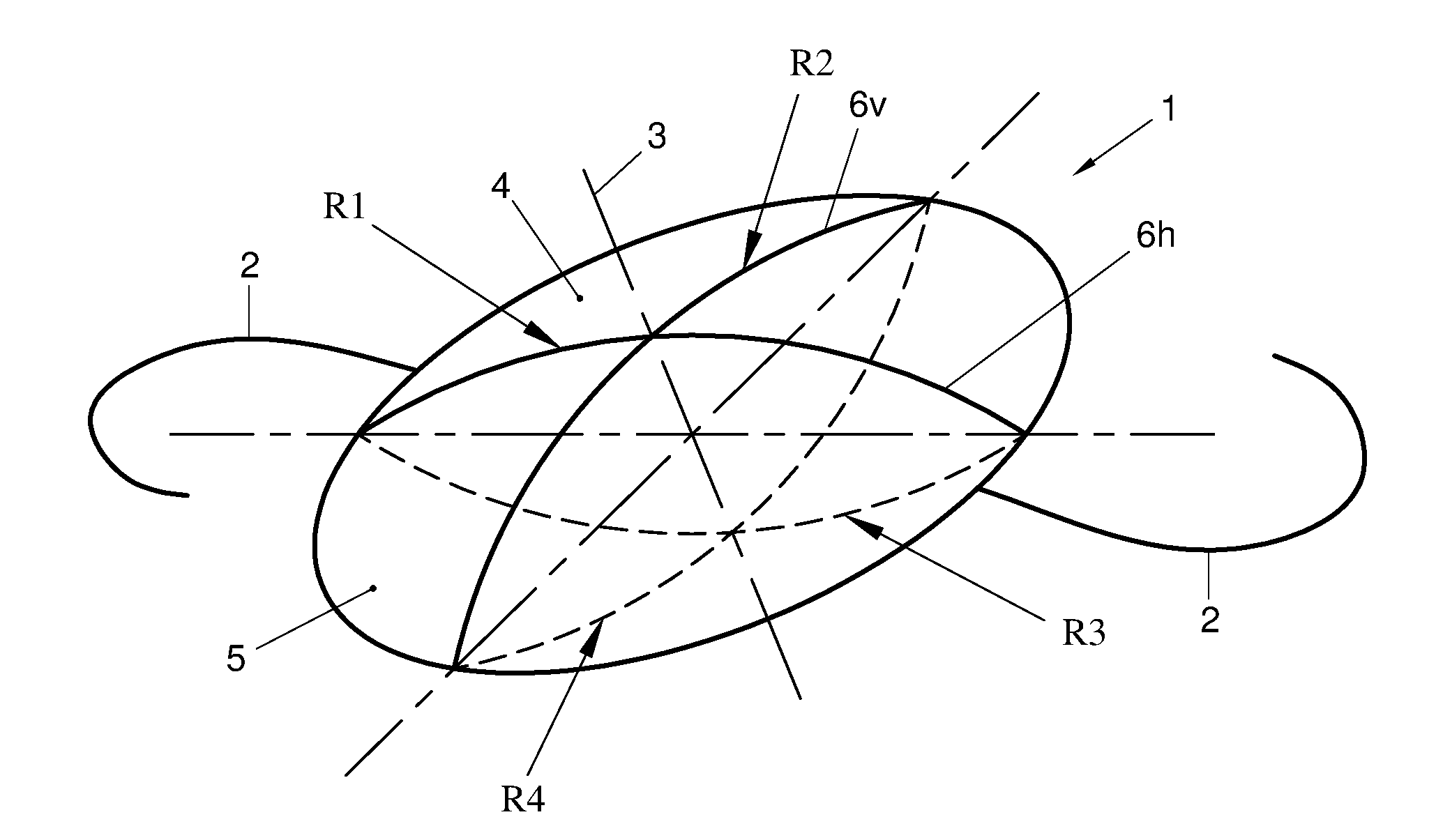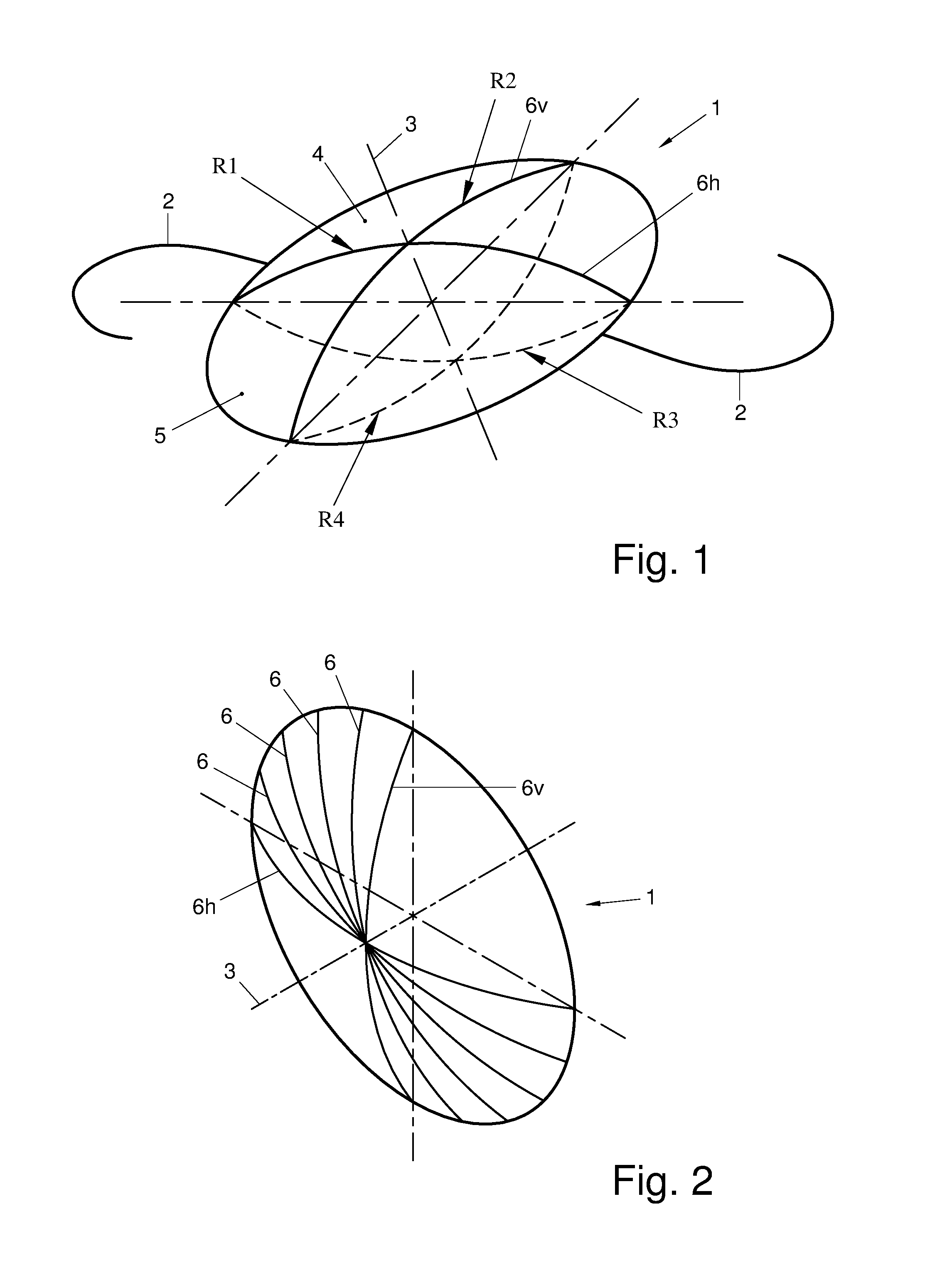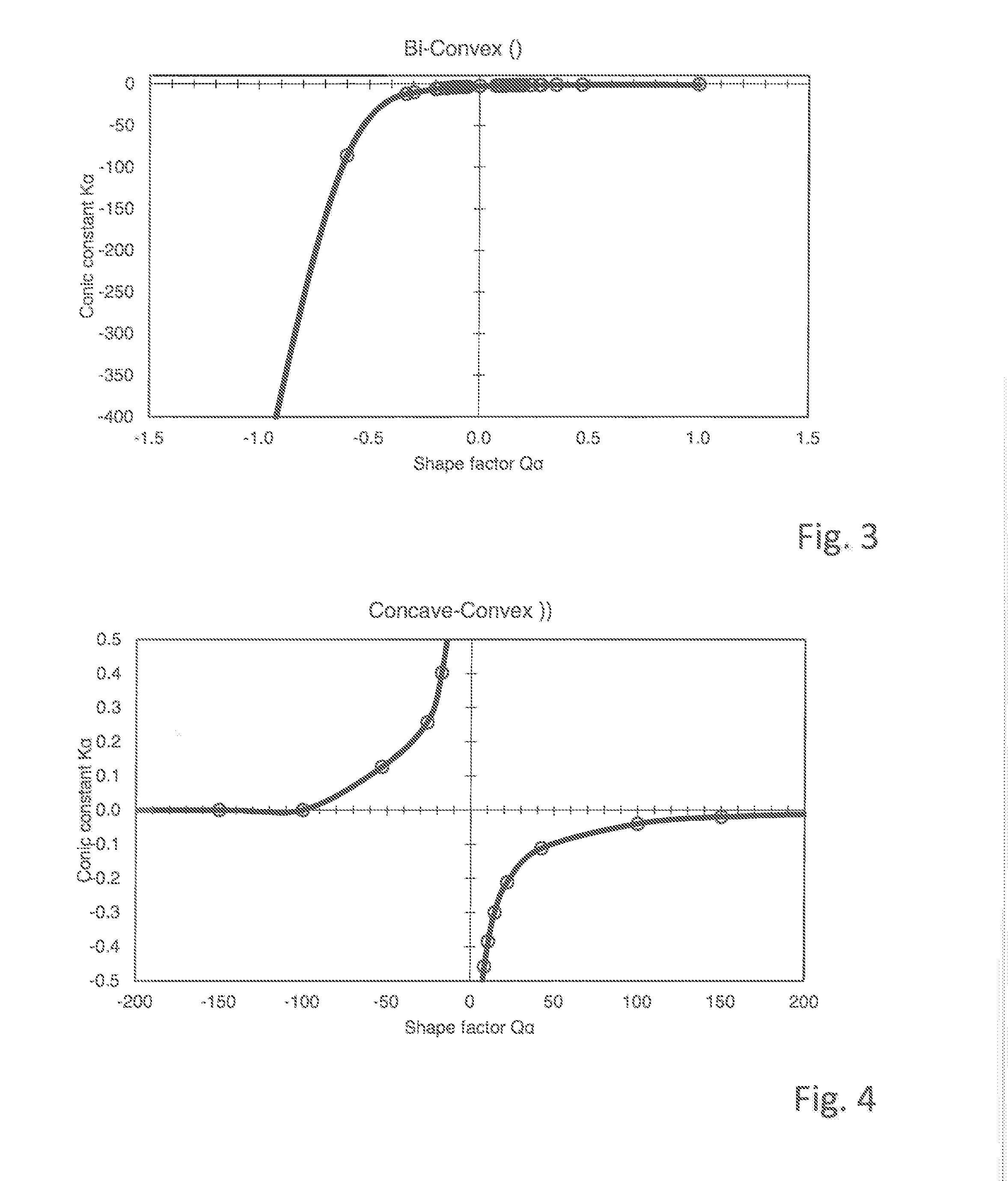Ophthalmic Lens for Correcting Astigmatism
Active Publication Date: 2016-10-13
OPHTEC
View PDF2 Cites 21 Cited by
- Summary
- Abstract
- Description
- Claims
- Application Information
AI Technical Summary
Benefits of technology
[0008]It is an object of the present invention to provide a lens for correcting astigmatism to be worn in or on the eye that introduces less
Problems solved by technology
Manufacturing a lens with toric surfaces on both sides increases manufacturing complexity and costs.
In particular, such aberrations increase with the pupillary opening when a larger lens surface is involved in refracting light onto the retina.
Since the pupillar
Method used
the structure of the environmentally friendly knitted fabric provided by the present invention; figure 2 Flow chart of the yarn wrapping machine for environmentally friendly knitted fabrics and storage devices; image 3 Is the parameter map of the yarn covering machine
View moreImage
Smart Image Click on the blue labels to locate them in the text.
Smart ImageViewing Examples
Examples
Experimental program
Comparison scheme
Effect test
 Login to View More
Login to View More PUM
 Login to View More
Login to View More Abstract
An ophthalmic lens to be worn on or in a human eye for refractive correction of astigmatism. The lens has an anterior surface and a posterior surface shaped such that at least a zone of the lens said lens has a first dioptric power over a first main meridian, a second dioptric power different from the first dioptric power over a second main meridian intersecting the first meridian, and a dioptric power between the first dioptric power and said second dioptric power over each meridian between the first and second main meridians, the optical power continuously varying from meridian to meridian. The main meridians and at least one meridian between the main meridians each have a different Coddington shape factor and a different asphericity that is related to the Coddington shape factor of the respective meridian in accordance with a relationship providing aberration neutral refraction for the respective meridian.
Description
FIELD AND BACKGROUND OF THE INVENTION[0001]The invention relates to ophthalmic lenses for correcting astigmatism to be worn in or on the eye.[0002]A typical healthy human eye has a spherical curvature over all meridians (lines of intersection with planes in which the optical axis extends) of the cornea. A common defect in the human eye is astigmatism, which is usually caused by a difference in curvature of the cornea over meridians in planes oriented at different angles. Usually the largest difference is found between meridians at an angle of 90° relative to each other. In young eyes typically most curvature is found in the vertical meridian, in older eyes typically most curvature is found in the horizontal meridian—in both cases orientations refer to eyes in the head in a normal upright position, e.g. of a standing or seated person.[0003]Approximately 22% of cataract patients have a corneal astigmatism of 1.5 D or more. Approximately 2% have a corneal astigmatism of 4.0 D or more (...
Claims
the structure of the environmentally friendly knitted fabric provided by the present invention; figure 2 Flow chart of the yarn wrapping machine for environmentally friendly knitted fabrics and storage devices; image 3 Is the parameter map of the yarn covering machine
Login to View More Application Information
Patent Timeline
 Login to View More
Login to View More IPC IPC(8): G02C7/04A61F2/16
CPCG02C7/047G02C2202/06A61F2/164G02C7/045G02C7/04G02C2202/22A61F2/1637
Inventor BIEMOLD, PETERDE HAAS, ERIKWASSENBURG, ALFRED WILLEM
Owner OPHTEC
Features
- R&D
- Intellectual Property
- Life Sciences
- Materials
- Tech Scout
Why Patsnap Eureka
- Unparalleled Data Quality
- Higher Quality Content
- 60% Fewer Hallucinations
Social media
Patsnap Eureka Blog
Learn More Browse by: Latest US Patents, China's latest patents, Technical Efficacy Thesaurus, Application Domain, Technology Topic, Popular Technical Reports.
© 2025 PatSnap. All rights reserved.Legal|Privacy policy|Modern Slavery Act Transparency Statement|Sitemap|About US| Contact US: help@patsnap.com



